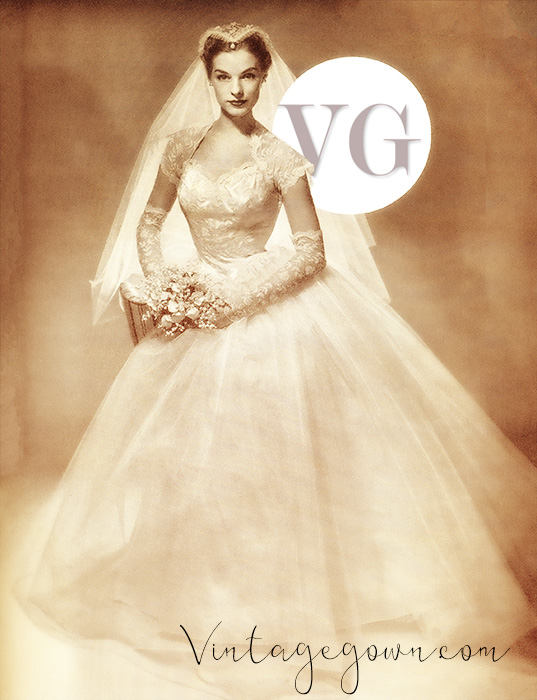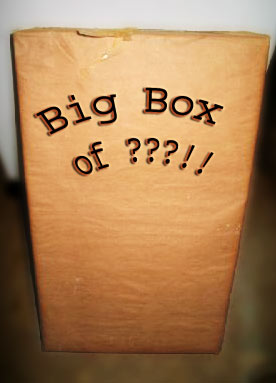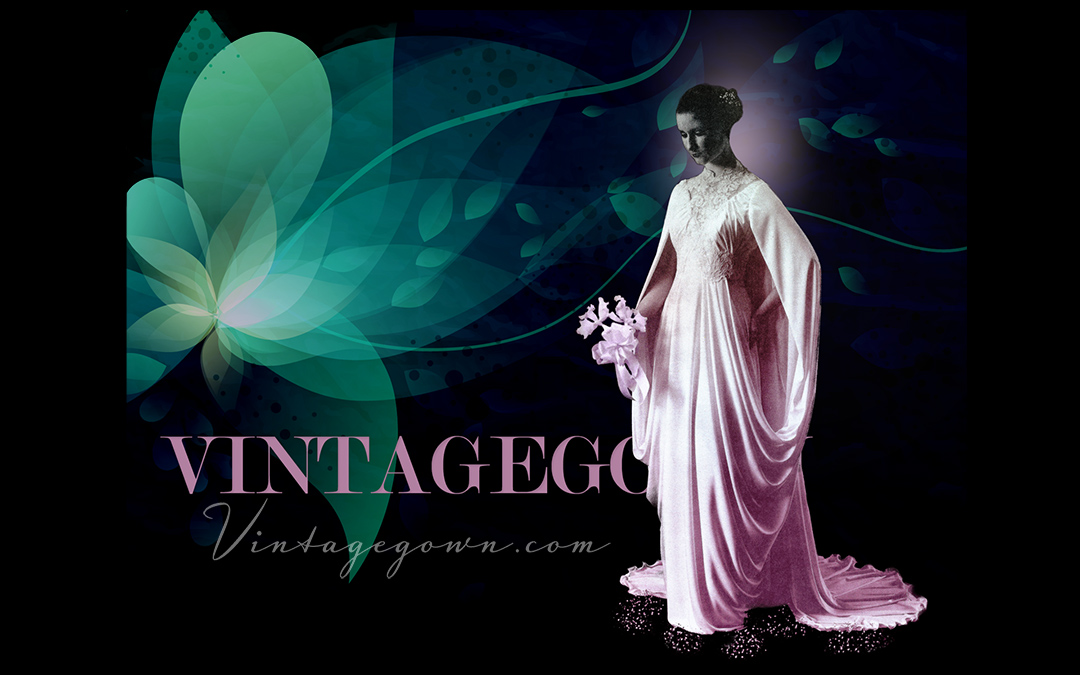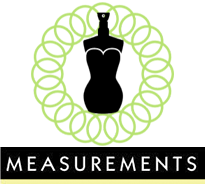Absolute Rule Number One
Establish how much you are willing to PAY.
“What will be the total cost of my vintage wedding gown?” is the most obvious question, but sometimes the answer isn’t as simple as it seems… Is your gown going to arrive clean and ceremony ready? Or will it need to be cleaned and repaired before it can be worn again? Some cleaners may not accept vintage items, so you may have to package the gown and ship it out to a qualified archivist.
Find out or realistically figure the costs involved before you buy any gown.
Research Cleaning Methods.
Do a little research beforehand concerning the expense of cleaning a gown by a qualified cleaner. There are lovely vintage gowns at all prices, but your gown is only the first part of the equation. If it’s not already cleaned, you’ll need to take on the task. You might be surprised to find out that the cost of archivally cleaning a gown is more than what you spent on the gown.
Dry Cleaning.
Dry cleaning is always cheaper, but will it clean your gown? And will the dry cleaner make you sign a release? The cost of dry cleaning a designer gown should run the same as dry cleaning a non-designer gown, but some cleaners may try to up the cost if they see a designer label. Even if your gown doesn’t have a label, the cleaner should honestly evaluate the effort needed to restore a gown. Beware of anyone who says that cleaning a vintage gown is easy. Chances are, it takes some effort to get an antique item spruced up but some cleaners are really good at it. When it’s done correctly, nothing can be more appreciated. When it’s done incorrectly, nothing can be more heartbreaking. We have paid $300 for archival cleaning for a vintage wedding gown and an additional $200 for restoration of vintage laces and 1930’s French rolled buttons and felt that it was well worth it.
Remember your budget.
If you are a woman who wants a rare vintage wedding gown or a designer vintage gown or vintage silk with French laces; expect to pay more and account for the archival restoration in your budget.
Don’t be talked into more than you want to spend and don’t settle for less.
It takes a skilled hand to restore lace. Find a qualified restorer that knows about vintage. Only you know what you can really afford, but these decisions are the fork in the road to success or failure with a vintage gown. Don’t forget to save for alterations, which can add on another $75 to $350. Buttons may also need to be re-sewn and can run anywhere from 50 cents to $1.50 per button.
Absolute Rule Number Two
Know what look you want before you shop.
 What does your dream dress look like? It’s a good idea to have an idea of what you want before you start your search. Many vintage clothiers have spent years in the business and will know exactly what you are looking for if you say “1920’s wedding.” But if you’re confused about the 20’s, and you really meant the 30’s, you’ll only frustrate your search results. Save fashion magazine clippings, print out Hollywood movie pictures, find old wedding photos… you might find that some looks can be very affordable to recreate. Pinterest is a great resource. And it’s never a good idea to buy the first gown you see, unless it’s positively, absolutely “the one.” Always do a lot of shopping around before you make any commitments.
What does your dream dress look like? It’s a good idea to have an idea of what you want before you start your search. Many vintage clothiers have spent years in the business and will know exactly what you are looking for if you say “1920’s wedding.” But if you’re confused about the 20’s, and you really meant the 30’s, you’ll only frustrate your search results. Save fashion magazine clippings, print out Hollywood movie pictures, find old wedding photos… you might find that some looks can be very affordable to recreate. Pinterest is a great resource. And it’s never a good idea to buy the first gown you see, unless it’s positively, absolutely “the one.” Always do a lot of shopping around before you make any commitments.
Depending on the era, especially the 1970’s and 1980’s, there’s enough vintage to go around. A reputable company will understand the need for you to keep looking elsewhere, and they’ll understand when it’s especially important for you to save a little money and make up your own mind on what you want and what you can afford. Take your time, that way they are sure to be happy with what you finally choose, but remember, if you see something and really, really like it- chances are someone else (perhaps a soul sister) is liking it too. Be honest and upfront with the dealer and they may place an item on hold for a few days for you.
Absolute Rule Number Three
Never, under any circumstances, purchase a gown without knowing your own measurements first.
Never mind the gown size, what is YOUR size? In inches. Asking for actual measurements is extremely helpful when one man’s idea of “size 10” is actually a size 2. Ask your seller for the gown’s measurements in inches, but know your own first. If they don’t match-they don’t match. Vintage wedding websites will fare better in this service expertise, but you should expect to pay more, especially if they have archivally cleaned and restored the gown for you. Ask the company you’re dealing with if you can take a day or two to hold the gown so you can double check your measurements. Reputable establishments won’t mind, in fact, they will encourage it. If a merchant makes you feel pressured to buy, avoid them. The bottom line is: Always, always, add on the “wearing ease” to a gown so that you can have some breathing room, whether you’re planning on losing weight before the wedding or not. It’s better to have a little breathing room.
Absolute Final Rule:
Never, under any circumstances, purchase a gown without knowing its condition first.
 Thousands of vintage wedding gowns are sold on-line every year and some are sold without ever opening the box! Please, whatever you do, run away from any dealer that claims to have a hermetically sealed package from 1949 with a “ten thousand dollar wedding gown inside.” They are looking at a certificate for the maker of the box, not the gown or the heirloom cleaning. (The heirloom cleaning service went out of business decades ago and any guarantee of perfection is void.) There is no reason to leave a gown in a box and not inspect it’s condition. Any dealer who refuses to do so is acting inappropriately. Things can go wrong during 60 years of storage. Insect stains Sublimation of Dye (the dye turns to gas and migrates) Mildew, etc. Buying a vintage gown without inspecting it in it’s present day condition is gambling, without question. Most reputable establishments won’t mind if you ask allot of questions about provenance and condition, in fact they encourage it. If your dealer says the gown was worth thousands of dollars decades ago yet cannot provide you with the original sales receipt or tells you that the garment cannot be removed from a sealed box- say no, thank you and walk away.
Thousands of vintage wedding gowns are sold on-line every year and some are sold without ever opening the box! Please, whatever you do, run away from any dealer that claims to have a hermetically sealed package from 1949 with a “ten thousand dollar wedding gown inside.” They are looking at a certificate for the maker of the box, not the gown or the heirloom cleaning. (The heirloom cleaning service went out of business decades ago and any guarantee of perfection is void.) There is no reason to leave a gown in a box and not inspect it’s condition. Any dealer who refuses to do so is acting inappropriately. Things can go wrong during 60 years of storage. Insect stains Sublimation of Dye (the dye turns to gas and migrates) Mildew, etc. Buying a vintage gown without inspecting it in it’s present day condition is gambling, without question. Most reputable establishments won’t mind if you ask allot of questions about provenance and condition, in fact they encourage it. If your dealer says the gown was worth thousands of dollars decades ago yet cannot provide you with the original sales receipt or tells you that the garment cannot be removed from a sealed box- say no, thank you and walk away.
It’s been said that a collectible or antique typically passes through four or five different owners from the time it first appears on the secondary market until it reaches you. Luckily, for wedding gowns, the opposite is true- especially if your dealer spends a considerable amount of time searching for gowns at private estates or buys from the original owner or bridal shop. A dealer must know what they are selling you- otherwise they are not practicing due diligence. If a gown is still in it’s original keepsake box, it may be suffering from insects, fold lines, mold or foxing and a dealer should be aware of all details before they pass their “find” on to you. Yes, unfortunately, the older an item is, the more important it is to have an accurate description, which is fundamental to your satisfaction as a buyer.
Never buy a gown without a detailed, written description, even if there are several original old wedding photos. In spite of what some dealers may have you believe, a vintage picture of the original bride is not worth a thousand words. Demand to see the dress as it is now.
The bottom line is: Ask as many questions that you can!
Happy Vintage Gown hunting!
Best-Wishes to you.



 Serving Brides on the Web since 1997, Gulden & Brown at Vintagegown.com specializes in finding authentic vintage wedding gowns and period accessories from the 1920's to the 1990's. We love vintage and we're glad you do too!
Serving Brides on the Web since 1997, Gulden & Brown at Vintagegown.com specializes in finding authentic vintage wedding gowns and period accessories from the 1920's to the 1990's. We love vintage and we're glad you do too!